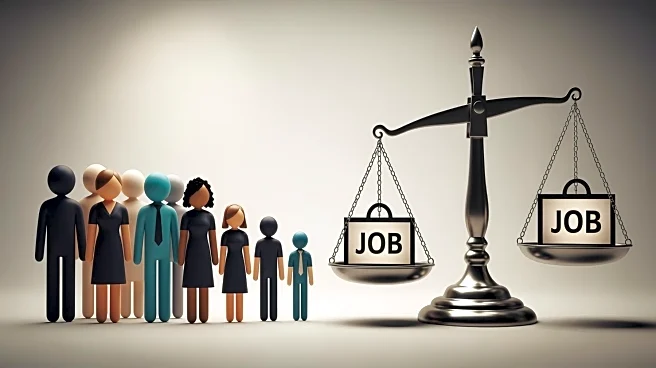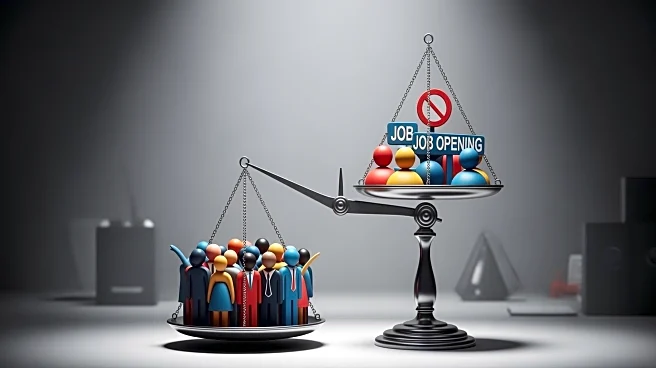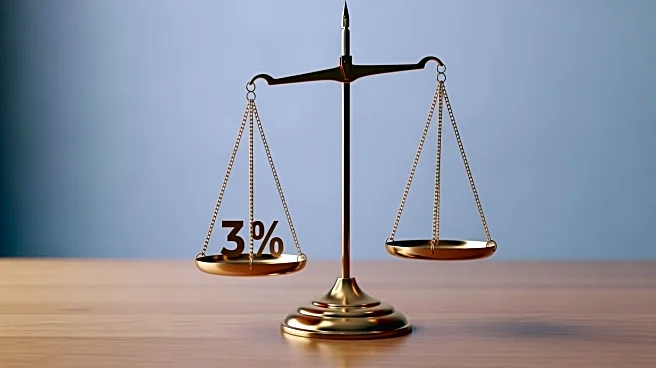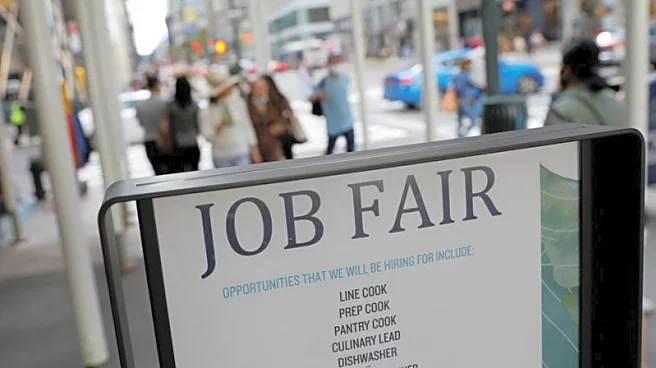What's Happening?
The Bureau of Labor Statistics has released data indicating that, for the first time since April 2021, there are more unemployed Americans than there are job openings. The Job Openings and Labor Turnover
Survey (JOLTS) report shows that the ratio of job vacancies to unemployed workers fell to 0.99 in July, down from 1.0, marking the lowest level since April 2021. This shift suggests a cooling labor market, with job openings totaling 7.18 million, which is below the 7.38 million expected by economists. Despite the decline in job openings, layoffs remain low, indicating that the issue is more about a decrease in job availability rather than an increase in job losses. Economists note that the labor market is slowing but not necessarily heading towards a recession.
Why It's Important?
This development is significant as it reflects a shift in the labor market dynamics, potentially impacting economic policy and interest rate decisions by the Federal Reserve. The decrease in job openings could influence the Fed's decision on whether to cut interest rates, with traders already increasing bets on a rate cut. The labor market's cooling could also affect economic growth and consumer spending, as fewer job opportunities may lead to reduced income and spending power. Additionally, the data highlights challenges in reentering the labor market for unemployed individuals, which could have broader social and economic implications.
What's Next?
The upcoming August jobs report is crucial, as it will provide further insights into the labor market's health and influence the Federal Reserve's interest rate decisions. A strong jobs report could justify maintaining current interest rates, while weaker data might increase the likelihood of a rate cut. Economists and policymakers will closely monitor labor force participation rates and job vacancy trends to assess the labor market's trajectory and its implications for economic policy.












